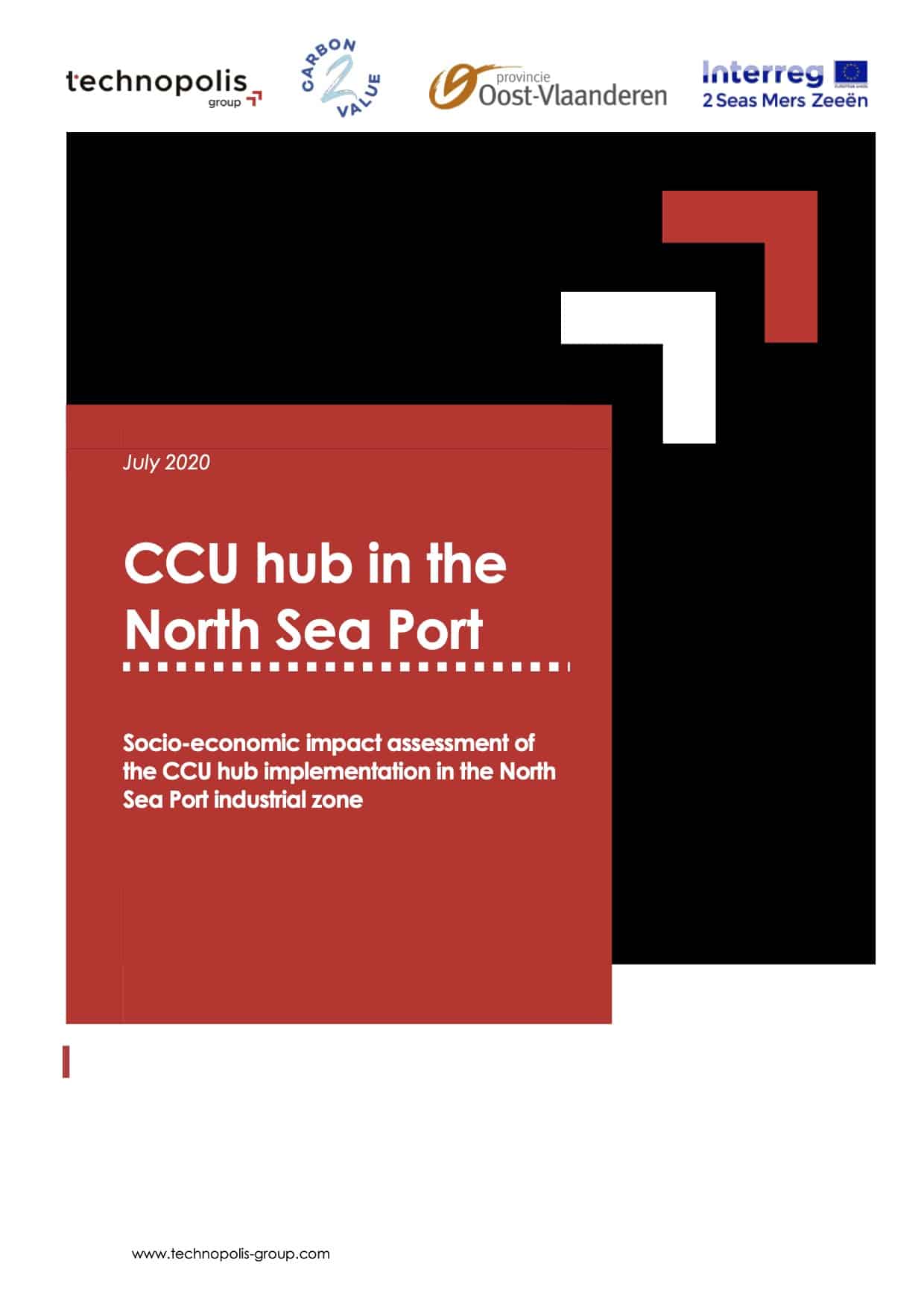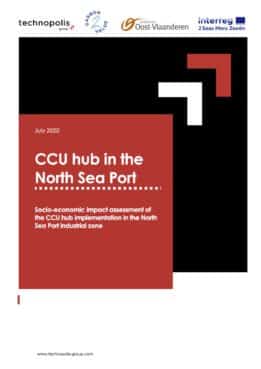Socio-economic impact assessment of the CCU hub implementation in the North Sea Port industrial zone
Publication date: 6 July 2020 | Report language: EN
This study has demonstrated that the environmental, economic and social benefits of carbon capture and utilisation (CCU) technology deployments could be promising for the local economy, while their wider diffusion can offer solid input towards addressing national and global climate change imperatives. This study, however, also showed that there are a number of obstacles that prevent the CCU initiatives from easily and quickly penetrating current industrial and economic systems. Addressing these obstacles would need favourable framework and market conditions that can be created by carefully designed policy measures and incentives.
With the proliferation of the circular economy in the EU there are growing calls for carbon removal via reuse and storage in products. Yet, CCU is still not well understood and embraced by a wider policy and economic community and often not regarded as a promising approach for GHG reduction. There are several challenges that prevent CCU technologies from gaining wider diffusion: economic barriers related to the cost of CCU technologies and products, technological challenges requiring further improvements, testing, piloting, research and innovation, ambiguity and lack of understanding of CCU technologies’ environmental performance, and policy barriers that are mainly due to uneven playing fields, lack of favourable framework conditions and limited political support.
These obstacles are interlinked and to a great extent reinforce each other, which means resolving them would require a comprehensive approach and favourable framework and market conditions, measures and incentives.
A major policy signal has to come from the EU regulatory landscape where the international context must also be factored in. National and regional policies are also important in setting ambitions which, in turn, drive local and regional strategies and concrete actions on the ground, such as those demonstrated in the North Sea Port industrial zone and CCU hub as it unfolds.
This study was commissioned by the East Flanders Development Agency (Provinciale Ontwikkelingsmaatschappij Oost-Vlaanderen) and funded through the Carbon2value project: Development and demonstration of low CARBON technologies to transform CO2 and CO streams from the steel industry into new VALUE chains under the European Interreg 2 Seas programme and co-funded by the Province of East Flanders, BE.
A shorter version of this report is available here.


